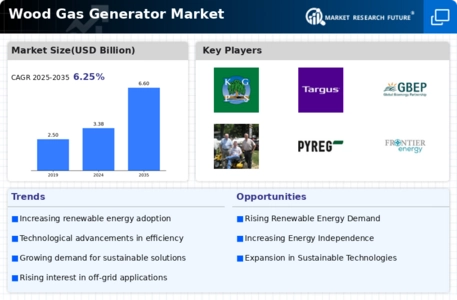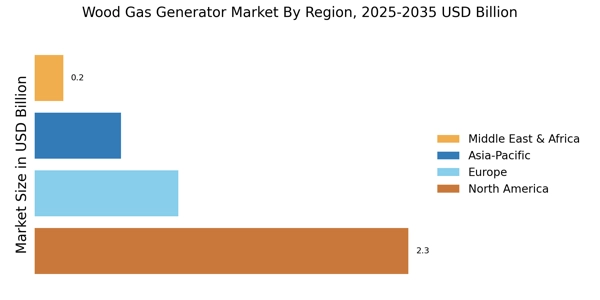Rising Energy Demand
The Wood Gas Generator Market is experiencing a surge in demand for renewable energy sources. As populations grow and industrial activities expand, the need for sustainable energy solutions becomes increasingly pressing. According to recent data, energy consumption is projected to rise by approximately 25% by 2030. This trend indicates a significant opportunity for wood gas generators, which provide a cleaner alternative to fossil fuels. The ability of these generators to convert biomass into usable energy aligns with the global shift towards sustainability. Consequently, the Wood Gas Generator Market is likely to benefit from this rising energy demand, as more consumers and businesses seek eco-friendly energy solutions.
Technological Innovations
Technological advancements play a crucial role in the Wood Gas Generator Market. Innovations in gasification technology have led to more efficient and reliable wood gas generators. Enhanced designs and improved materials contribute to higher energy output and lower emissions. Recent developments indicate that modern wood gas generators can achieve efficiencies exceeding 80%, making them competitive with traditional energy sources. These advancements not only improve performance but also attract environmentally conscious consumers. As technology continues to evolve, the Wood Gas Generator Market is expected to expand, driven by the appeal of cutting-edge solutions that meet energy needs sustainably.
Government Incentives and Policies
The Wood Gas Generator Market is positively influenced by supportive government policies and incentives aimed at promoting renewable energy. Many governments are implementing subsidies, tax breaks, and grants to encourage the adoption of biomass energy solutions. For instance, various countries have established renewable energy targets that include biomass as a key component. These initiatives not only facilitate market entry for wood gas generators but also enhance their attractiveness to potential users. As regulatory frameworks evolve to support sustainable energy, the Wood Gas Generator Market is likely to experience growth fueled by these favorable conditions.
Cost-Effectiveness of Biomass Energy
The Wood Gas Generator Market is bolstered by the cost-effectiveness of biomass energy. As traditional energy prices fluctuate, biomass energy presents a stable and often lower-cost alternative. The production of wood gas generators utilizes readily available materials, which can reduce operational costs significantly. Reports indicate that biomass energy can be up to 50% cheaper than conventional energy sources in certain regions. This economic advantage encourages both residential and commercial sectors to invest in wood gas generators. As a result, the Wood Gas Generator Market is likely to see increased adoption driven by the financial benefits associated with biomass energy.
Environmental Awareness and Consumer Preferences
The Wood Gas Generator Market is significantly impacted by increasing environmental awareness among consumers. As individuals and businesses become more conscious of their carbon footprints, the demand for sustainable energy solutions rises. Surveys indicate that a substantial percentage of consumers are willing to pay a premium for eco-friendly products, including wood gas generators. This shift in consumer preferences drives manufacturers to innovate and improve their offerings. Consequently, the Wood Gas Generator Market is poised for growth as it aligns with the values of environmentally aware consumers seeking to reduce their impact on the planet.


















Leave a Comment